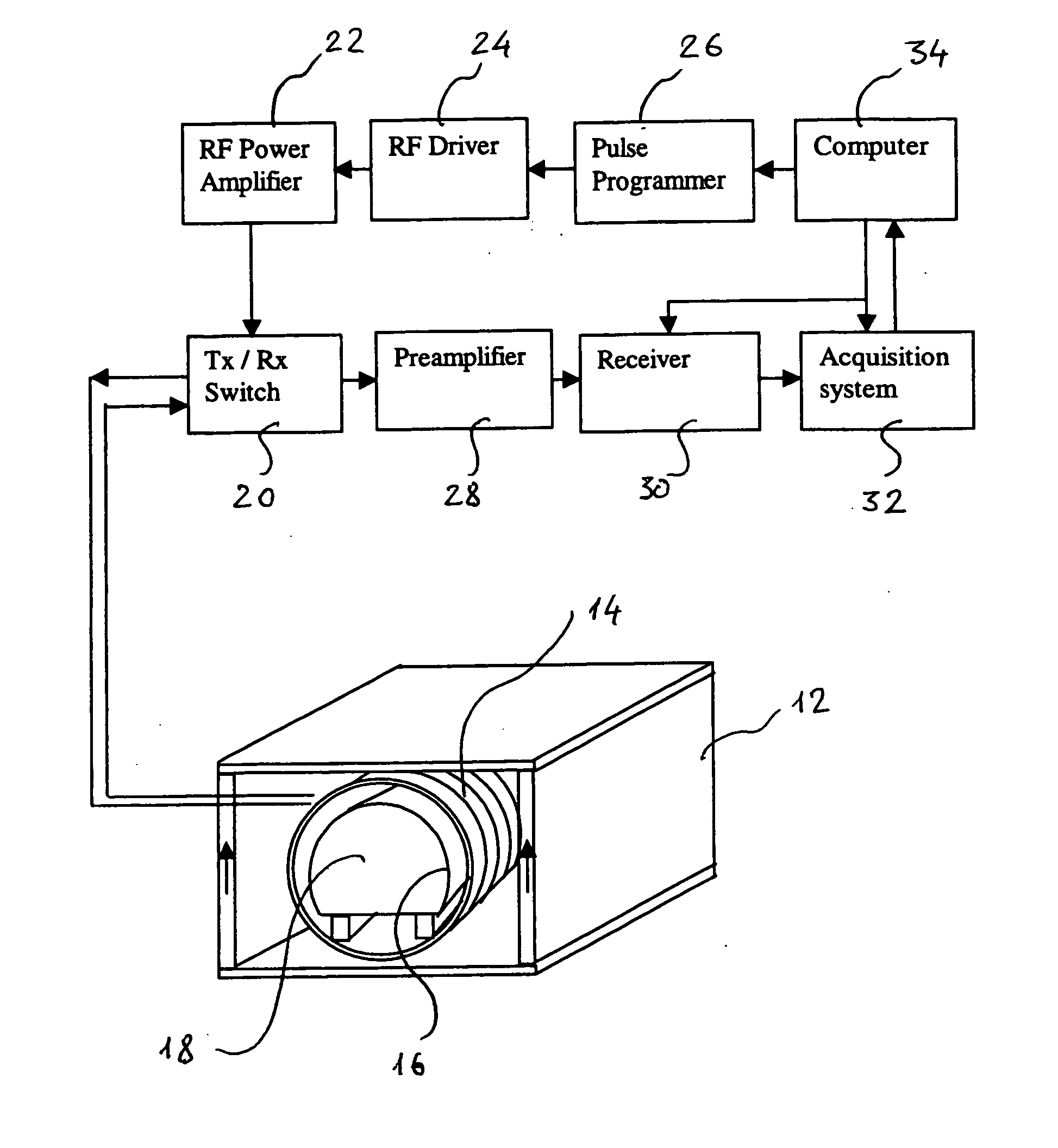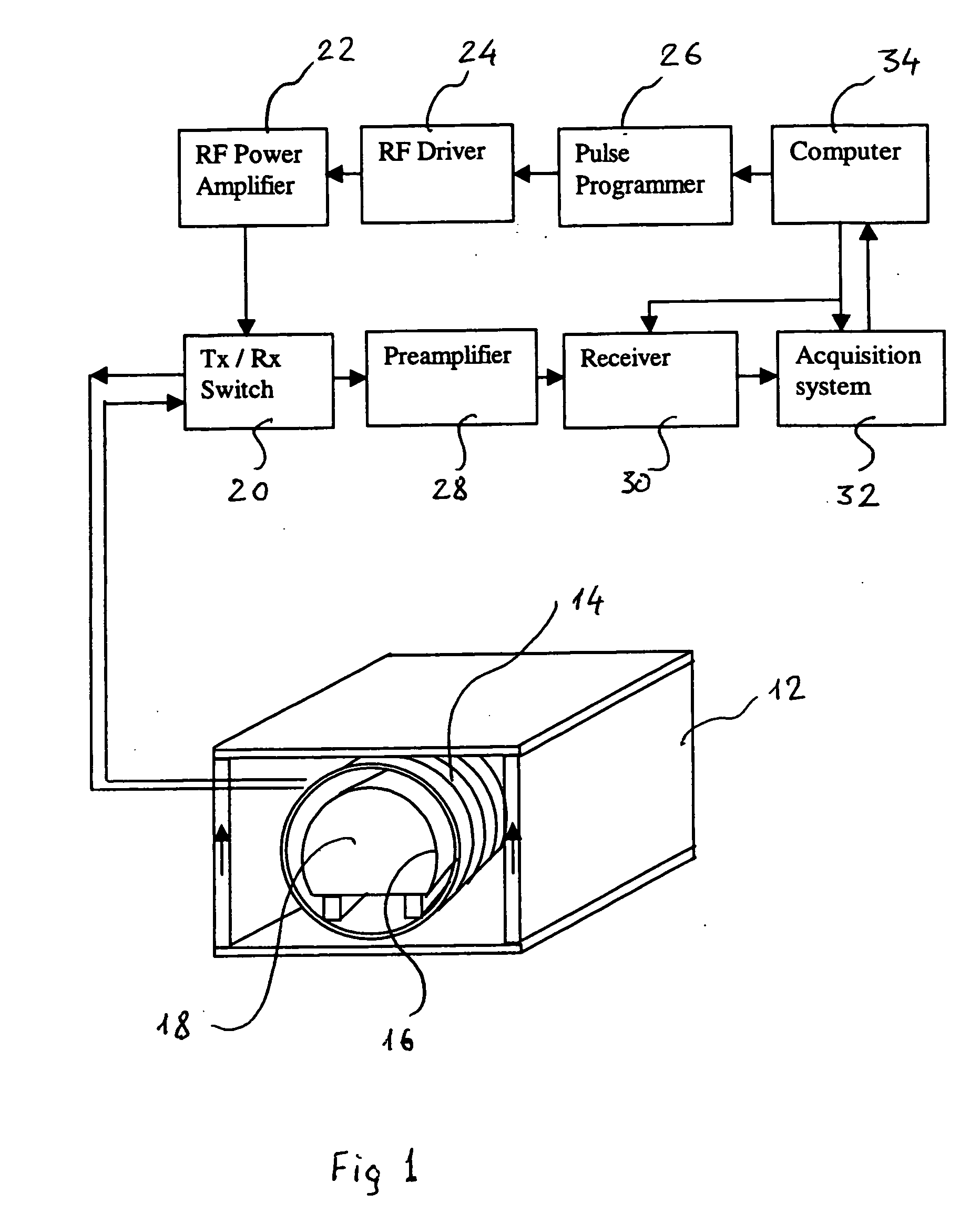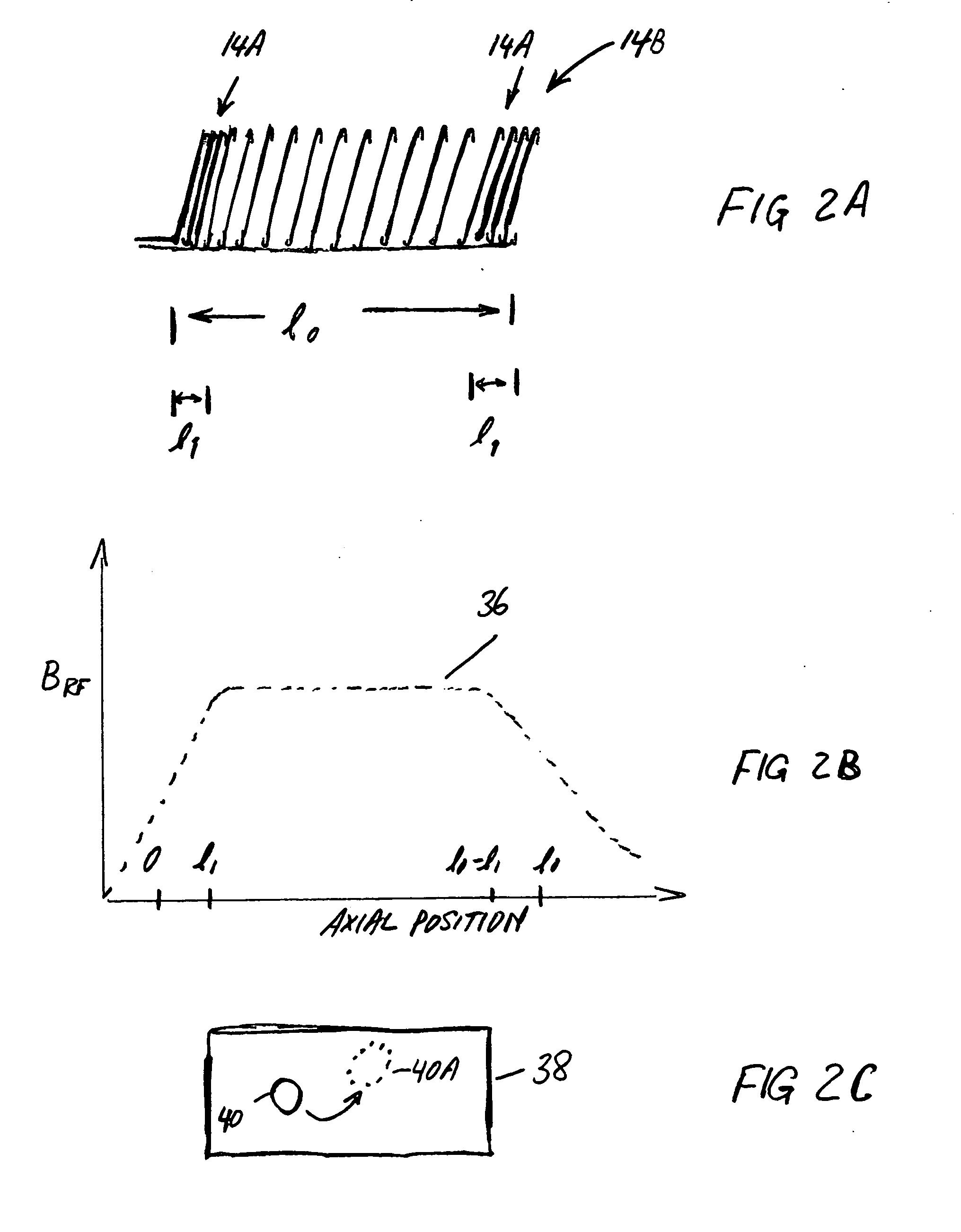Nuclear magnetic resonance method for body composition analysis
a technology of nuclear magnetic resonance and body composition, which is applied in the field of nuclear magnetic resonance and magnetic resonance imaging (mri) apparatus and methods, can solve the problems of limited use, inability to accurately measure in individuals with cardiovascular or pulmonary disorders, elderly, young children, and very obese subjects, and may cause substantial errors due to body movemen
- Summary
- Abstract
- Description
- Claims
- Application Information
AI Technical Summary
Benefits of technology
Problems solved by technology
Method used
Image
Examples
Embodiment Construction
[0048] The description of the invention first includes a description of an example apparatus for making nuclear magnetic resonance measurements for body composition analysis. Following the description of the example apparatus is a description of embodiments of methods for analyzing the measurements made by the example apparatus to determine the body composition. “Body composition analysis” as used in this description generally refers to determining a mass or mass fraction of one or more selected constituents of the body or a part of the body being analyzed. Finally, an alternative embodiment of an apparatus is described. The alternative apparatus includes elements adapted to select a particular part of the body for analysis by localizing nuclear magnetic resonance excitation and detection to within a part of the body. The same composition analysis methods described with respect to the first apparatus may be used with measurements made using the alternative apparatus, or even with co...
PUM
 Login to View More
Login to View More Abstract
Description
Claims
Application Information
 Login to View More
Login to View More - R&D
- Intellectual Property
- Life Sciences
- Materials
- Tech Scout
- Unparalleled Data Quality
- Higher Quality Content
- 60% Fewer Hallucinations
Browse by: Latest US Patents, China's latest patents, Technical Efficacy Thesaurus, Application Domain, Technology Topic, Popular Technical Reports.
© 2025 PatSnap. All rights reserved.Legal|Privacy policy|Modern Slavery Act Transparency Statement|Sitemap|About US| Contact US: help@patsnap.com



